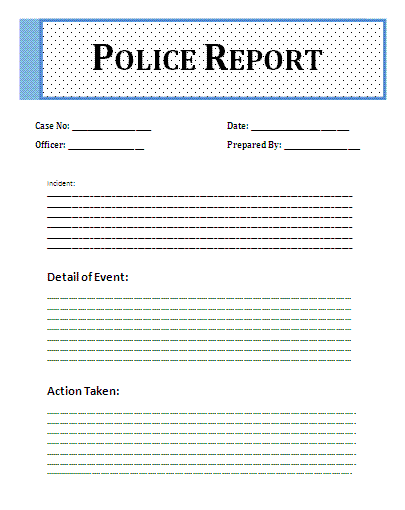In today’s digital age, online security and privacy have become paramount concerns. The question of whether it is illegal to log into someone else’s account without their permission has gained significant attention as instances of unauthorized access to personal accounts continue to rise. This overview delves into the legal implications of such actions, exploring the ethical and legal dimensions, potential consequences, and preventive measures that individuals can take to protect their online presence.
The act of logging into someone else’s account without their explicit permission raises complex ethical and legal issues. It fundamentally violates the principle of consent, infringing on the individual’s right to control access to their personal information. Unauthorized account access can breach trust, damage relationships, and even lead to identity theft or financial loss. From a legal standpoint, unauthorized access typically falls under cybercrime and computer trespass laws, which vary across jurisdictions.
Legal Framework: Is It Illegal To Log Into Someone Else’s Account Without Their Permission?
Yes, it’s generally considered illegal to log into someone else’s account without their permission. Unauthorized access to someone’s account can be a violation of their privacy and may also breach laws related to computer fraud, identity theft, or unauthorized access to computer systems, depending on your jurisdiction. It’s important to always seek permission before accessing someone else’s accounts.
Unauthorized account access is generally considered a cybercrime, as it involves gaining unauthorized access to computer systems or networks. Laws governing unauthorized access can differ between countries, but they commonly fall under categories such as hacking, unauthorized use of computer systems, identity theft, and fraud. Many countries have enacted legislation to address these issues, often carrying severe penalties for offenders.
The consequences of logging into someone else’s account without permission can be substantial. Legal penalties may include fines, imprisonment, or both, depending on the jurisdiction and severity of the offense. Civil remedies, such as compensatory damages, may also be pursued by victims to recover losses incurred due to the unauthorized access. In addition to legal ramifications, the act can lead to damaged relationships, loss of reputation, and psychological distress for the victim.
Preventive Measures Against Unauthorized Access To One’s Account
In an era where cybercrimes are on the rise and personal information is constantly at risk, taking preventive measures to safeguard online accounts is of utmost importance. Unauthorized access to accounts can lead to severe consequences, ranging from identity theft to financial loss. Here are comprehensive and practical preventive measures individuals can implement to protect their online presence:
1. Strong and Unique Passwords:
Creating strong, complex passwords is the first line of defense against unauthorized access. Avoid common words, phrases, or easily guessable information such as birthdays. Instead, use a mix of uppercase and lowercase letters, numbers, and special characters. Each account should have a unique password to prevent a domino effect if one password is compromised.
2. Password Managers:
Managing numerous strong passwords can be challenging. Password manager tools can securely store and organize passwords, ensuring you don’t resort to using the same password across multiple accounts. These tools often offer features like password generation, encrypted storage, and auto-fill options.
3. Two-Factor Authentication (2FA):
Enabling 2FA provides an extra layer of security by requiring a second form of verification, such as a text message code or fingerprint scan, in addition to your password. Even if someone obtains your password, they won’t be able to access your account without the secondary verification method.
4. Regular Account Monitoring:
Routinely check your accounts for any unusual or unauthorized activity. Many platforms offer activity logs that show recent logins, devices used, and actions taken. If you spot any discrepancies, take immediate action to secure your account and change your password.
5. Update Software and Apps:
Keep your operating system, software, and apps up to date. Updates often include security patches that address known vulnerabilities. Ignoring updates can leave your device and accounts exposed to potential breaches.
6. Beware of Phishing Attacks:
Phishing attacks involve tricking individuals into revealing sensitive information by impersonating trustworthy entities. Be cautious of unsolicited emails, messages, or links that request login credentials or personal information. Verify the authenticity of the sender before taking any action.
7. Secure Wi-Fi Networks:
Use secure and encrypted Wi-Fi networks, especially when accessing sensitive accounts or conducting online transactions. Public Wi-Fi networks are often less secure and can be susceptible to hackers intercepting your data.
8. Regularly Review Privacy Settings:
Social media and online platforms frequently update their privacy settings. Take time to review and adjust these settings to control who can access your information, posts, and photos. Limit the amount of personal information visible to the public.
9. Secure Email Accounts:
Email accounts are often a gateway to other accounts. Use strong passwords for your email, and consider enabling 2FA. Avoid clicking on suspicious links or downloading attachments from unknown senders.
Logging into someone else’s account without their permission is not only ethically wrong but also has legal consequences. The act violates the principles of consent, privacy, and security. Various legal frameworks address unauthorized account access, and the penalties for offenders can be severe. It is crucial for individuals to prioritize their online security by implementing strong security measures and being aware of the potential risks associated with unauthorized account access. Respect for others’ privacy and adherence to the law are fundamental in maintaining a safe and ethical digital environment.
Someone Logged Into My Account Without My Permission
Step 1: Gather Evidence:
The first step is to assess the situation. Confirm that your account has indeed been compromised and wasn’t accessed by you or someone you authorized. Keep records of any unusual activities, such as unauthorized transactions, changed settings, or unfamiliar emails.
Gathering evidence is crucial. Take screenshots, save emails, or any communication that can help prove unauthorized access. Documenting these details will be important if you decide to pursue legal action later.
Step 2: Change Your Passwords and Enable Two-Factor Authentication
As soon as you suspect unauthorized access, change your passwords for the compromised account and any other accounts that share the same or similar passwords. Use strong, unique passwords that include a mix of letters, numbers, and symbols.
Enable two-factor authentication (2FA) wherever possible. 2FA adds an extra layer of security by requiring a second form of verification, such as a text message or app-generated code.
Step 3: Contact the Platform or Service Provider
Notify the platform or service provider about the unauthorized access. They might have protocols in place to help you regain control of your account and investigate the breach. Many platforms have dedicated support teams for account security issues.
Provide them with all the evidence you’ve collected, such as timestamps, IP addresses, and any other relevant information that might aid their investigation.
Step 4: File a Police Report
If you believe the unauthorized access can expose you to financial harm, consider filing a police report. Unauthorized access to your accounts can fall under hacking or identity theft laws, depending on your jurisdiction. Be prepared to provide the evidence you’ve gathered to law enforcement.
Step 5: Consult with an Attorney:
Legal action might be necessary depending on the severity of the breach and the damages incurred. Consult with an attorney who specializes in cybercrime or digital security to understand your legal rights and options. They can advise you on the best course of action and represent you if needed.
Step 6: Pursue Civil Remedies
If you’ve suffered financial loss, emotional distress, or other damages due to the unauthorized access, you might also consider pursuing civil remedies. Your attorney can help you understand whether you have grounds for a civil lawsuit against the perpetrator. Damages sought could include compensation for losses, legal fees, and punitive damages.
Keep in mind that the legal process can be time-consuming and expensive, so carefully consider whether pursuing a civil case is the right choice for your situation.
Step 7: Follow Legal Proceedings
If you decide to pursue legal action, be prepared for a potentially lengthy process. Your attorney will guide you through the necessary legal proceedings. This might involve negotiation, mediation, or litigation, depending on the circumstances.
During this phase, it’s essential to continue documenting any interactions, communications, and evidence related to the case. Your attorney will present your case in court if it comes to that, and having a well-documented trail of events can strengthen your position.
In conclusion, if someone logs into your account without permission, you have several steps to take, each of which serves a distinct purpose. Assess the situation, change your passwords, and enable 2FA to secure your accounts. Contact the platform and gather evidence to support your case. Consider filing a police report if the breach involves criminal activity. Consult with an attorney to understand your legal options and pursue civil remedies if necessary. Finally, follow legal proceedings diligently if you decide to take your case to court. Remember that each case is unique, so it’s crucial to tailor these steps to your specific circumstances and jurisdiction.
RELATED:
Can You Sue Anyone for Anything? (An In-Depth Overview)
Can a Person Who Confesses Guilty with No Evidence Be Prosecuted?
Last updated on: April 11, 2024




